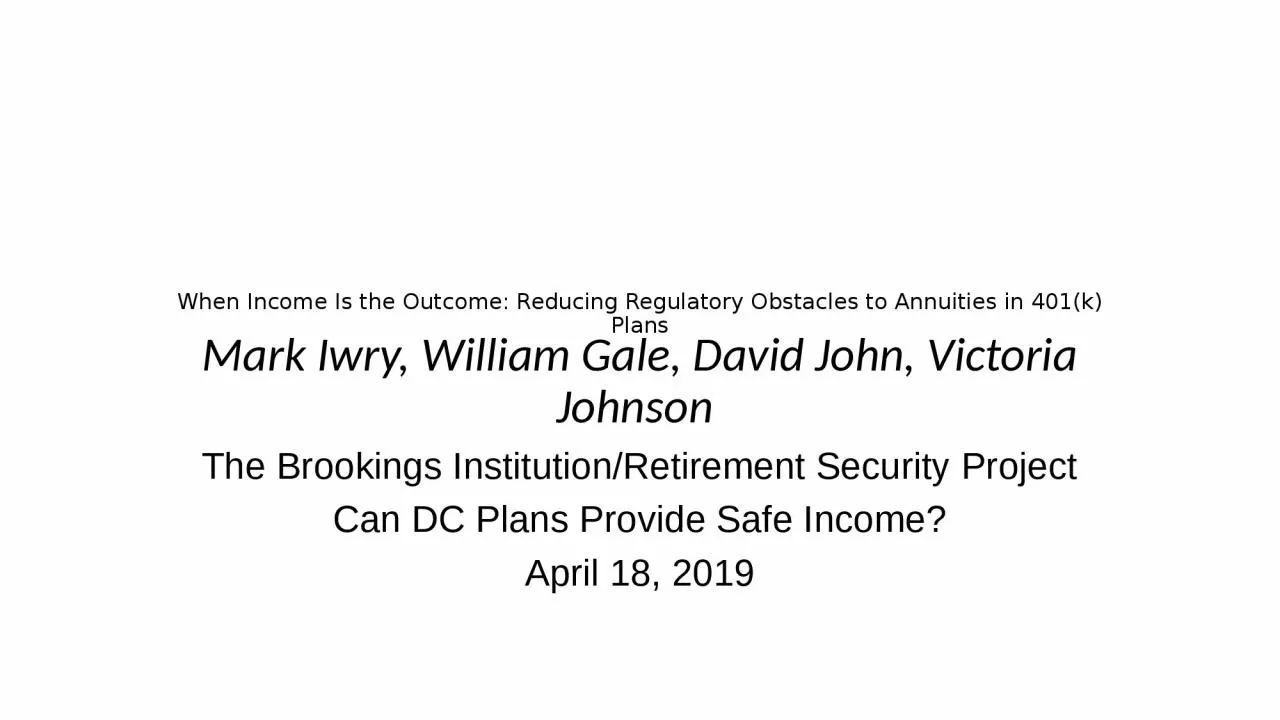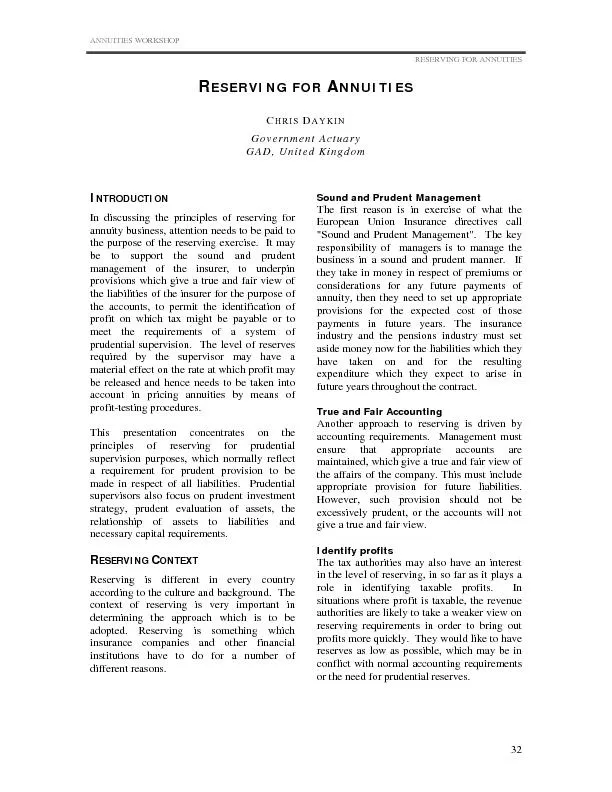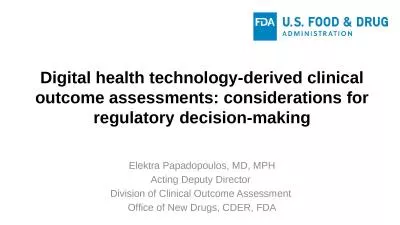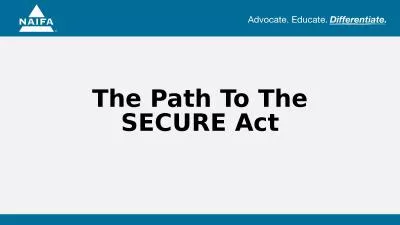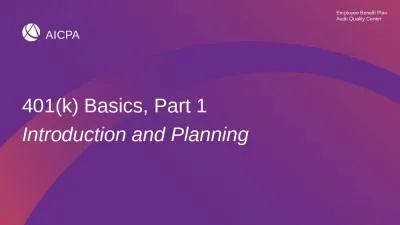PPT-When Income Is the Outcome: Reducing Regulatory Obstacles to Annuities in 401(k) Plans
Author : fiona | Published Date : 2024-03-13
Mark Iwry William Gale David John Victoria Johnson The Brookings InstitutionRetirement Security Project Can DC Plans Provide Safe Income April 18 2019 Annuities
Presentation Embed Code
Download Presentation
Download Presentation The PPT/PDF document "When Income Is the Outcome: Reducing Reg..." is the property of its rightful owner. Permission is granted to download and print the materials on this website for personal, non-commercial use only, and to display it on your personal computer provided you do not modify the materials and that you retain all copyright notices contained in the materials. By downloading content from our website, you accept the terms of this agreement.
When Income Is the Outcome: Reducing Regulatory Obstacles to Annuities in 401(k) Plans: Transcript
Download Rules Of Document
"When Income Is the Outcome: Reducing Regulatory Obstacles to Annuities in 401(k) Plans"The content belongs to its owner. You may download and print it for personal use, without modification, and keep all copyright notices. By downloading, you agree to these terms.
Related Documents

